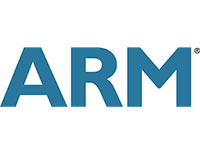ARM is getting a lot of attention lately.
The chip designer, whose energy efficient processor technology powers the vast majority of the world’s smartphones and tablets, is benefiting greatly from the popularity of the iPad and other ARM-based devices. Even Microsoft, a long-time x86 devotee, has jumped on the ARM bandwagon for its Windows RT operating system and its Surface tablet.
Recently though, there’s been a lot of buzz surrounding ARM as IT companies mull a transition to chips inspired by its mobile processor microarchitectures. This week, rumors emerged that Apple is thinking of switching from Intel processors to its own ARM-based processors for future desktops and notebooks.
But ARM’s biggest impact might be felt in the data center.
Last week, AMD announced that it’s partnering with ARM to make a 64- bit chip for cloud servers. The exciting part is that the companies plan to leverage technology from AMD’s SeaMicro acquisition, specifically a compute fabric that harnesses the processing power of multiple discrete processors in an energy efficient manner.
Meanwhile, both Dell and HP are working on early ARM servers. But those efforts are for naught if there’s no software ecosystem to support them. Luckily, there are also some big new developments on that front.
Open Source Steps Up
Earlier this week, a bunch of big technology organizations, including AMD, Facebook, HP and Red Hat announced that they’re creating a working group called the Linaro Enterprise Group (LEG), which seeks to bring Linux server technology to ARM servers. Last month, Sean Michael Kerner reported over at ServerWatch that Dell donated a Calxeda ARM-based server to the Apache Software Foundation.
Why does that matter?
“The Apache Software Foundation is one of the most influential open source groups today, overseeing the HTTP web server, Hadoop, Tomcat and many other widely used programs,” writes Kerner. In July, it was announced that OpenStack, the white-hot open source cloud platform (distributed under an Apache license), is making its way to ARM servers.
Exciting times…


Leave a Reply